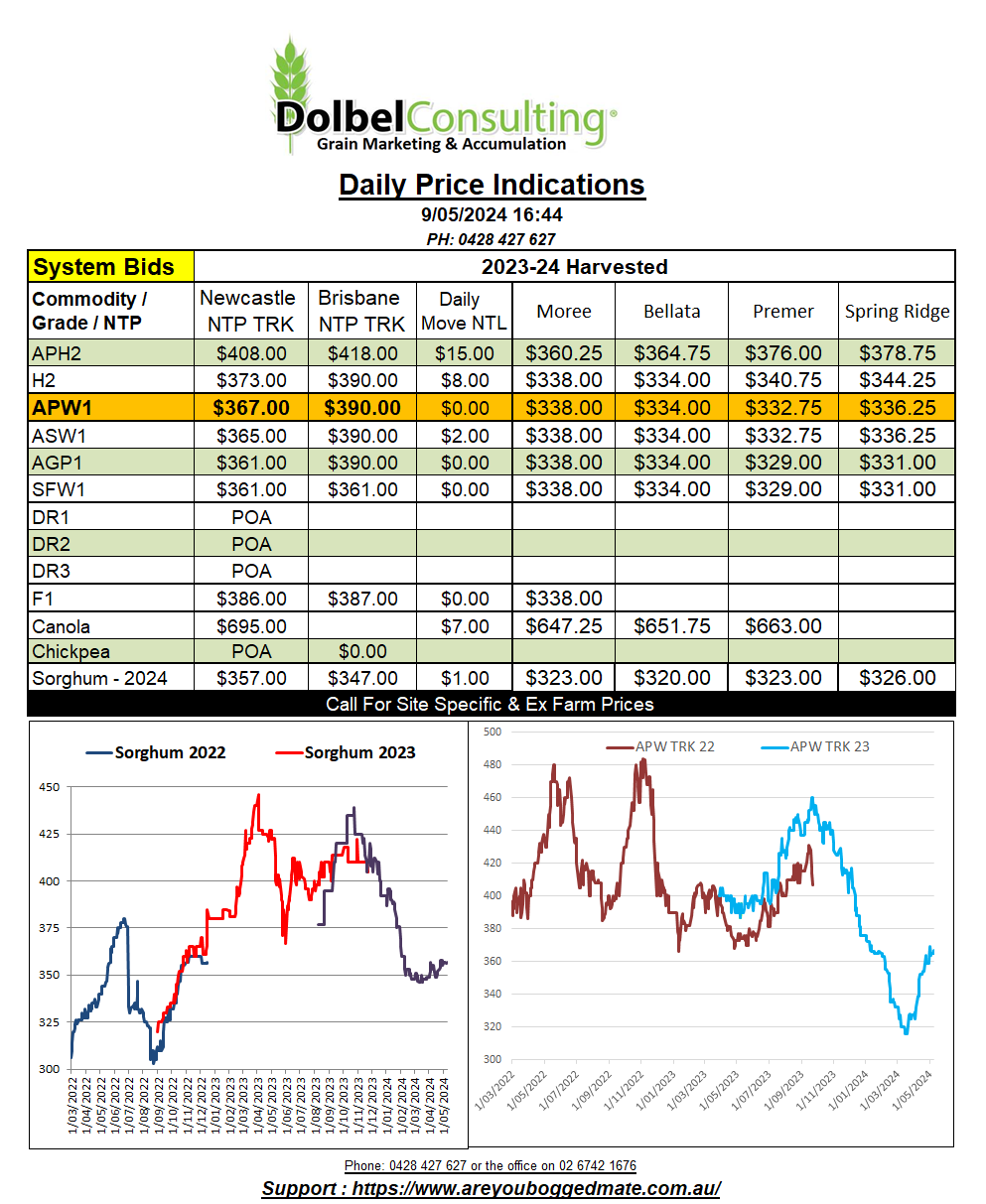9/5/24 Prices

It appears that Monday nights rally in US wheat futures may have just been a “dead cat bounce”, not unlike the black and white cat found a little contorted at the gate when I arrived this morning, he wasn’t about to jump up and run away either, RIP unknown gutter cat. The market, not unlike the road for gutter cat, can at times be hard to negotiate. The rally may have been the last of the funds closing out their unwanted shorts prior to this weeks World Ag Supply and Demand Estimates report from the USDA.
The slightly weaker AUD should counter some of the fall in US wheat futures at the local level. The move in the AUD is worth about +AUD$1.10/t while the move in nearby Chicago SRWW is equivalent to roughly -AUD$4.89/t.
After a few days of upside the Russian wheat price, FOB Black Sea, also slipped away. The move in Russian values was not much though, the weaker AUD countering the move. That was not the case for Ukraine wheat which had pushed higher since the recent Russian attacks on Odessa. Values FOB Black Sea for Ukraine wheat fell roughly AUD$4.91 per tonne when taking the AUD / USD exchange rate into account.
In Russia the central regions of Lipetsk, Voronezh and Tambov have declared an ag emergency due to recent frosts. The Voronezh area alone estimating that 265,000ha of crop land is dead or severely damaged after the temperatures dropped as low as -4.6C on the morning of the 4th of May. The regions produce fruit as well as cereals and sunflower. The damage to each crop is yet to be quantified. The filing for a state of emergency allows regions affected to access subsidies and to deviate yields from official target indicators. Read into that what you will.
Brazil, Rio Grande do Sol is still calculating the cost of the flooding. Port closures and rail line damage is slowing or stopping export capacity for Rio Grange. There is still plenty of speculation when it comes to quantifying soybean losses and the impact the flood will have on wheat sowing.
There is little chance the damage to Brazilian crops will make it into Friday night’s WASDE report. Generally that data is up to 30 days old when published.
